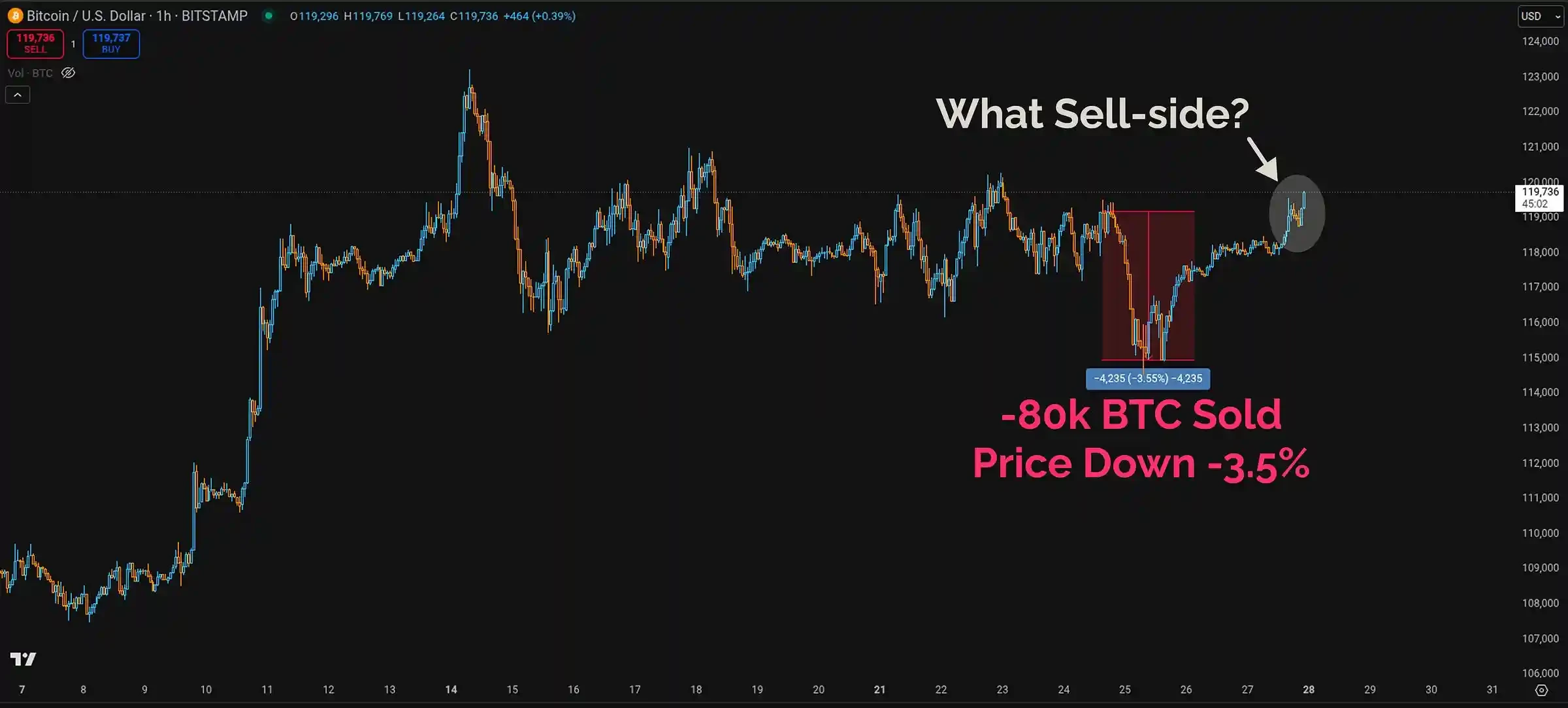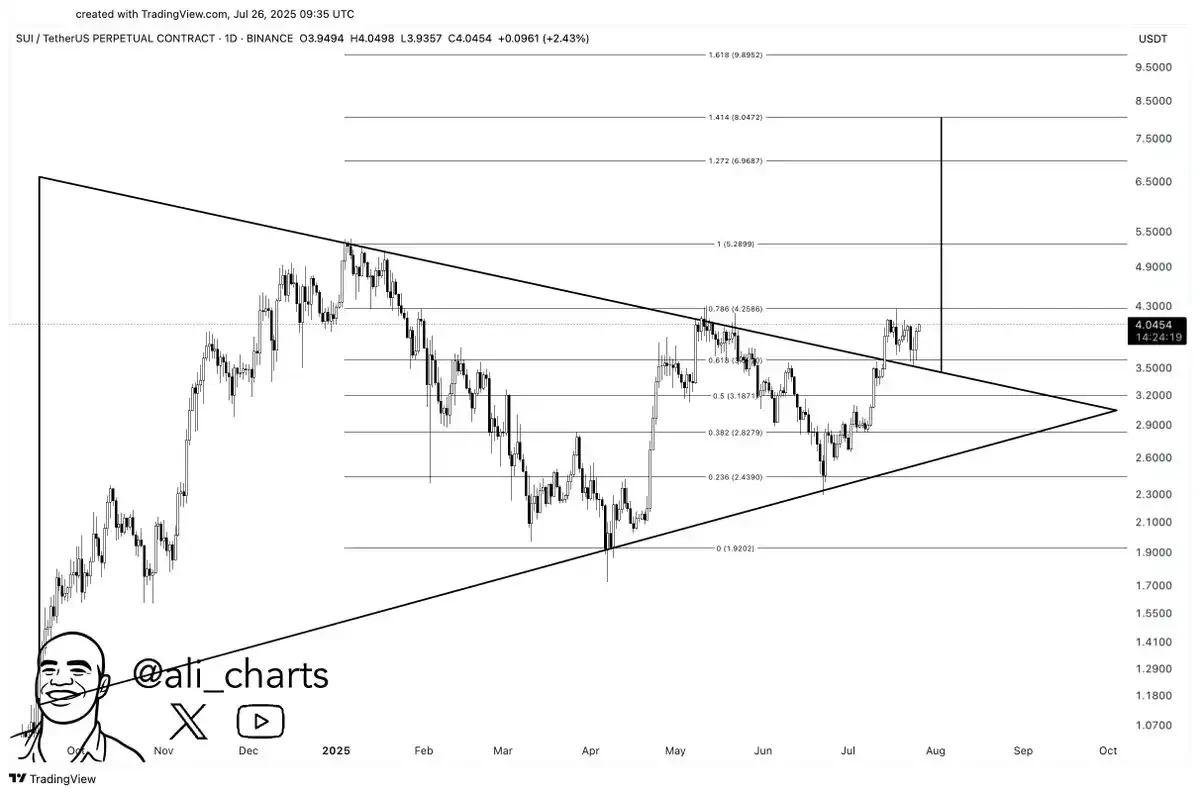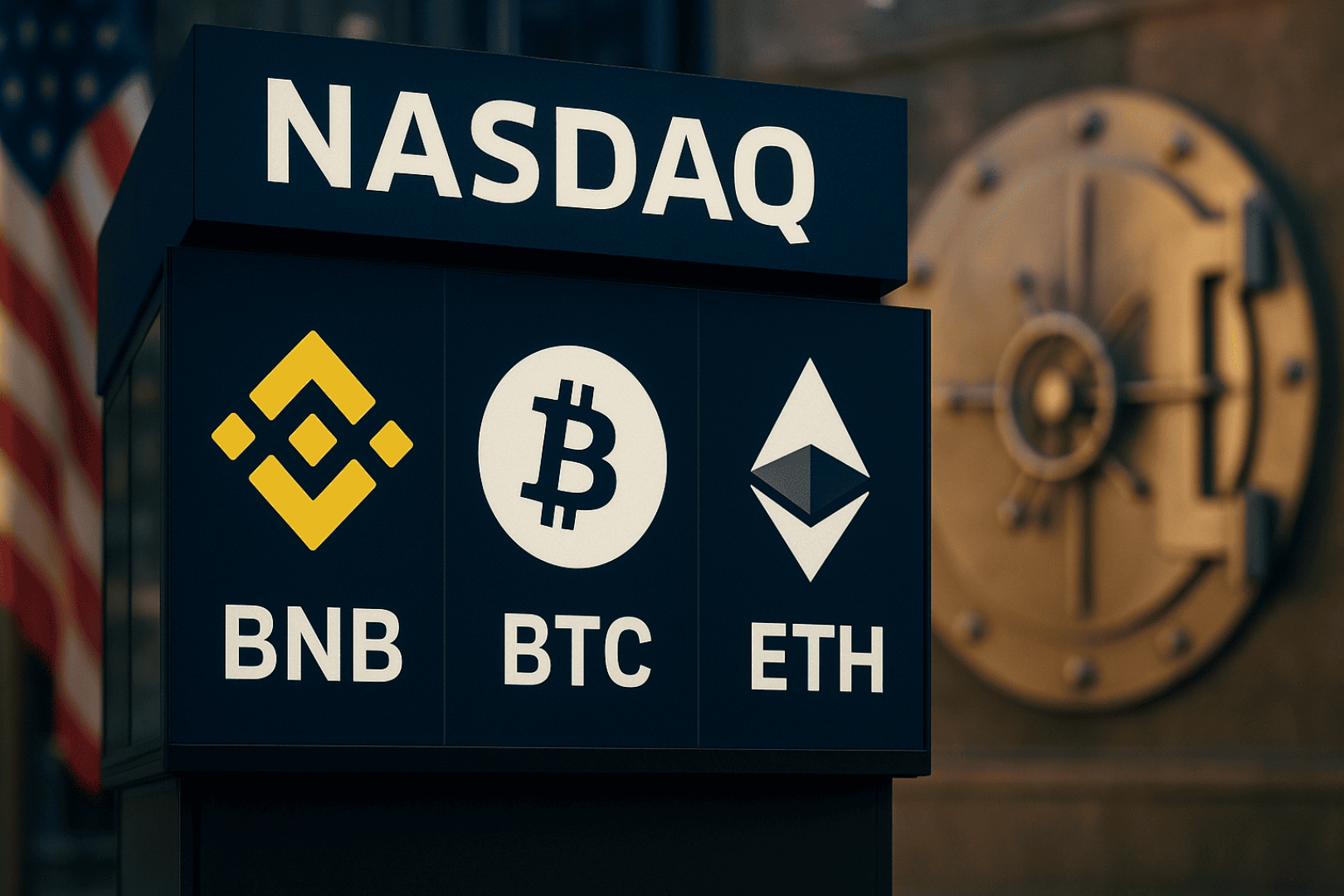Original title: "Rate Cut or Rain Tomorrow? A Key Week to Set the Topic for August's Ups and Downs | Trader's Observation"
Most people don’t realize it yet, but what’s happening this week is setting the tone for August and may determine the direction of the market throughout the summer.
Three major variables - the Federal Reserve's interest rate decision, the financial reports of technology giants, and the White House digital asset report - will be implemented at the same time, and this happens just before the arrival of the season when the crypto market is most likely to weaken in history.
Traders are at an awkward crossroads: should they plan for a rebound in advance, or prepare for a round of liquidity withdrawal?
As 10xResearch wrote in its latest report: "We are now approaching a critical moment: the most important events on the calendar - corporate earnings reports, the White House digital asset report and the FOMC meeting - are about to be settled before the arrival of summer. Given that the cryptocurrency market has historically performed relatively weakly in August and September, traders are faced with a dilemma." And their real-time indicators also show that today's trend is likely to set the pace for the market throughout the summer.
To complicate matters further, the market isn't just waiting for an answer on whether to cut interest rates, but rather a signal on the direction of the rate cut. Will the rate cut shift to easing, continuing to drive Bitcoin and Ethereum higher? Or will the rate cut continue, leaving the market with a slump?
Next, BlockBeats has compiled macroeconomic information on interest rate cuts and tariffs, as well as traders' current market conditions and mainstream currency trends, to provide some directional references for everyone's trading this week.
This week's three-part macroeconomic data
From Wednesday to Friday, the United States will release three core economic data in succession - GDP, core PCE and non-farm payrolls - which together constitute the three yardsticks for the starting point of interest rate cuts in this cycle, and their influence on market sentiment is even no less than this week's Federal Reserve interest rate meeting.
July 30 (Wednesday): Preliminary second-quarter GDP figures are expected to show a +1.9% increase, a significant recovery from the -0.5% growth in the first quarter. A further increase in the actual figure could be interpreted by the market as a sign that a soft landing is still underway, potentially dampening demand for an early rate cut.
July 31 (Thursday): June core PCE inflation is expected to rise 2.7% year-over-year. This is the Fed's most closely watched inflation indicator. If it falls slightly below expectations, it could strengthen market bets on a rate cut this year; if it unexpectedly rises, it could trigger a correction in short-term risk assets.
August 1 (Friday): July's non-farm payroll data is released, with expectations of 115,000 new jobs and a slight rise in the unemployment rate to 4.2%. This will directly impact the Federal Reserve's assessment of whether the labor market has cooled significantly and may be a key factor in determining the tone of policy.
Expectations of a rate cut tomorrow are low
The Federal Reserve will hold its FOMC monetary policy meeting on Tuesday, July 30th, and Wednesday, July 31st. Market expectations are that the benchmark interest rate will remain unchanged at 4.25%–4.50%. Polymarket forecasts indicate that as of July 29th, the probability of the Fed maintaining interest rates unchanged is 97%, while the probability of a 25 basis point rate cut is only 3%.
In other words, the market does not expect a real interest rate cut this time, but is waiting for a "signal of an interest rate cut."
Nick Timiraos, a Fed spokesperson, wrote in the Wall Street Journal: "Fed officials do believe a rate cut will eventually be necessary, but they are not ready to do so this week." "Whether Powell will drop any clues about a September rate cut at his press conference will be the focus of market attention."
Several institutions have pointed out that the current US policy environment is already extremely loose, and premature interest rate cuts could exacerbate the risk of asset bubbles and weaken the Fed's ability to respond to future crises. Furthermore, Trump's continued pressure on Powell could undermine the Fed's independence and make policy statements more politically sensitive.
According to AP News and MarketWatch, a three-way split has emerged within the Federal Reserve:
1. Hawkish camp (such as Michelle Bowman): They believe that the current interest rate cut is "too early" and inflation has not yet been truly controlled.
2. Dove camp (such as Christopher Waller): advocates releasing easing signals in advance and supports "interest rate cut in July".
3. The majority of those on the sidelines: emphasize "continue to observe more data," maintain a "data-driven" stance, and tend to favor further reductions at some point this year.
This disagreement may be brought to the fore for the first time this week, becoming the source of sharp market fluctuations. Whether Powell will signal a path forward for rate cuts will be his biggest test this week.
At the same time, this also means that even if the policy remains unchanged this week, any dovish hints in the statement or press conference will be quickly interpreted by the market as a signal of "betting in advance on rate cuts."
Market reaction to tariffs muted
Last weekend, the Trump administration reached a new trade agreement with the European Union, avoiding a full-scale tariff war that was originally scheduled for August 1.
But that doesn't mean the market is excited. US and European stocks showed little reaction: the S&P 500 rose slightly, while the Stoxx 600 fell. Both indices briefly gained during the session, but both gave up their gains by the close.
Some economists believe that "the market is no longer paying attention to the US-China trade agreement and is in urgent need of another new catalyst."
For Europe in particular, the agreement isn't reciprocal. German Chancellor Friedrich Merz and French Minister of European Affairs Benjamin Adad have both publicly expressed their hope for more open trade in the future. Meanwhile, Trump reiterated on Monday that "it's very likely that a uniform tariff of 15% to 20% will be imposed on countries that do not have a trade agreement with the United States."
This means that the "30% cliff" that the market had previously worried about has been eliminated. Although 15% is still high, the predictability of tariff policy itself is enough to be a positive factor.
In response, trader The Investors Side (@InvestorsSide) believes: "This is by no means a clean handshake moment - but what the market needs is not peace, but predictability. And that is what this agreement brings in the short term."
In his view, a 15% tariff is still high compared to pre-2024 levels, but it eliminates the most explosive scenario, a sudden 30% tariff cliff in August, which is a win for risk sentiment.
At the same time, he also believes that the extension of the tariff suspension period by the United States and China for another 90 days confirms that an agreement will be reached between the two major economies over time, and the market can fully recover from the events in April that caused the stock market to plummet by more than -20%.
At least on the issue of tariffs, traders can finally stop encountering "black swans" and instead focus their attention back on financial reports, interest rates and currency prices themselves.
$900 million in turnover, BTC remains strong
Bitcoin has held near all-time highs this month, showing no signs of a typical market bubble. Implied volatility and funding rates, often indicators of excessive speculation, have remained low, suggesting investors view the rally as more robust.
Most importantly, several technical indicators that were once considered "bubble signals" have not sounded the alarm: implied volatility (IV) remains low; funding rates are moderate and normal; and the leverage ratio has dropped significantly.
Several analysts have pointed out that since the launch of the spot Bitcoin ETF at the beginning of this year, the market structure has quietly changed: "More and more traditional funds have begun to allocate Bitcoin through ETF channels, no longer relying on contracts and leverage, and no longer following the retail model of chasing rising and falling prices." This has made market performance more stable and made pullbacks an opportunity to "buy" rather than "missing the opportunity."
Nick Forster, founder of the on-chain options platform Derive, also agreed with this shift, saying, “Mike Novogratz’s prediction of $150,000 is no longer a fantasy.” “The options market currently gives a 52% probability that Bitcoin will hit $150,000 by the end of the year.”
Just this week, Bitcoin completed a staggering "mass transfer" event—80,000 BTC, equivalent to approximately $9 billion, were recovered from Satoshi Nakamoto-era cold wallets, sold, and put into circulation. The transaction, led by Galaxy Digital, became the largest known legacy transfer and sale in cryptocurrency history.
According to analysis account @TheInvestorsSide, this transaction originally attracted great attention from the market, but the actual fluctuation was far less than expected: "Despite such a large scale, BTC only briefly fell below $115,000, and rebounded to $119,000 a few days later."
What does this mean? He believes: "Bitcoin barely managed to survive a $9 billion sell-off, which says everything we need to know. The natural market trajectory remains upward, and if BTC can overcome macro resistance next week, my next short-term target is $130,000."
James Check (@Checkmatey), a renowned on-chain analyst and co-founder of Checkonchain, provided a more detailed recap: "This was a very traditional, benign sale. Galaxy facilitated the transfer for the client and published the news on-chain using OP_RETURN."
Even more interesting is that he pointed out that Galaxy also "conveniently" sent back a transaction output with 1 satoshi to the original address - which was widely interpreted as "raising the middle finger" to opponents who tried to "legally take over these BTCs."

From an on-chain perspective, however, Check is more concerned with structural capital flows: "This isn't a simple wallet migration; it's a real change in ownership. Whether sold over the counter or on an exchange, on-chain transactions must be completed, and capital is repriced."

He emphasized that multiple indicators such as realized market capitalization, active addresses, and capital flows accurately reflected this event; the price only retreated 3.5% and then recovered quickly.
Check pointed out that this is a typical retracement-rebound pattern that occurs in the middle of a bull market, known as the "Dali Llama recovery pattern": "Even though it happened over the weekend, the on-chain data and market reaction remained surprisingly robust, and Bitcoin will go higher."
ETH hits $4,000
According to the latest data from the options market: Bitcoin's December implied volatility is only 30%, indicating that investors have stable expectations for its upward path; Ethereum's December implied volatility is as high as 60%, almost twice that of Bitcoin.
This seems to indicate that Bitcoin is more likely to follow a steady upward trend, while Ethereum may experience a more violent and nonlinear outburst.
ETH's performance confirms this: the past two weeks have been dominated by ETH's significant rise, surging from $2,600 to nearly $3,800. After BTC repeatedly broke through its all-time high, ETH/BTC remained low until $123,000, after which ETH's turn took over. It rose from $3,000 to $3,800 in just five days, a 27% increase, with very limited declines.

According to @TheInvestorsSide: "Ethereum ETFs have surpassed Bitcoin ETFs in terms of daily inflows for six consecutive days, setting a new record of 16 consecutive days of net inflows."
He said frankly that this is a typical Wall Street sentiment recapture: "After several months of neglect, Wall Street has embraced ETH again, which makes me believe that we will see ETH break through $5,000 in the short to medium term."
Nick Forster, founder of the on-chain options platform Derive, gave a more direct prediction: "The probability of Ethereum rising to $6,000 before the end of the year has soared from less than 7% at the beginning of July to more than 30%." He sees this as a "massive repricing" of tail risk.
This echoes the judgment of Charles Edwards, founder of Capriole Fund: he believes that ETH will hit a record high in the next "6 to 12 months."
Analyst Viktor revealed another layer of funding logic - the reflexive cycle of ETH funding companies is accelerating this process:
The most obvious examples are Sharplink Gaming and Bitmine, led by Tom Lee. Sharplink Gaming's stock price surged nearly fivefold in two weeks in early July. The team capitalized on this by selling newly issued shares and using the proceeds to buy ETH, with a peak purchase of $400 million in a single week. Its current mNAV is 2.3, and if valuations remain high, this "selling shares to buy coins" trend is expected to continue. After completing a $250 million private placement in just 10 days, Bitmine publicly announced that its total ETH holdings exceeded $1 billion. It is continuing to raise funds and acquire ETH through ATMs (issuing new shares at market prices).
"These altcoin funds are creating a self-sustaining funding cycle through stock price increases, financing, and coin purchases." Viktor added: "The strength of $ETH has naturally driven the rise of some ETH test coins, particularly in the DeFi sector, with $CRV, $FXS, and $CVX all seeing a 200% increase." $ENA has also surged from its lows, gaining 125%, but the final leg of its rise may have been due to the preemptive announcement of the establishment of $ENA Fund. The company is called StablecoinX and trades under the symbol $USDE. Once again, caution is advised when purchasing shares in altcoin fund companies.
In his latest internal report, “The Alchemy of 5%,” Tom Lee, chairman of Bitmine and co-founder of Fundstrat, stated bluntly: “Wall Street generally believes that Ethereum will be one of the most important macro trades of the next decade.”
He predicts that BTC will reach $250,000 by the end of 2025. His target price for ETH is set at $60,000, citing the following reasons: ETH is the primary platform for Web 3, DeFi, stablecoin issuance, and staking; spot ETFs improve the entry path; fund companies provide structural buying; and inflation and macroeconomic cycles will boost the premium of crypto assets.
In his opinion, this round of market trend is not a "speculation bull market" in the traditional sense, but an institutional-level main upward wave cycle jointly shaped by ETFs, fund companies and on-chain liquidity.
Trader Entry SUI
The token, with a daily trading volume of $4.7 billion and a market capitalization of $9.98 billion, is beginning to trend upwards and has the potential for further gains. As SUI recovers from the market pressures that typically occur during periods of prolonged volatility, traders are starting to revisit it.
Ali Martinez, a prominentcryptocurrency analyst , analyzed that the SUI token broke out of a symmetrical triangle pattern on the daily chart—a classic technical formation often associated with large price swings. A breakout of a symmetrical triangle pattern is often interpreted as a shift from market uncertainty to clear directional momentum, in this case, upward.

Ali Martinez mentioned that as long as investment flows continue, a confirmed breakout above the $4.50 resistance level could lead the price towards $8. He also explained that the triangle pattern marks the end of the consolidation phase and the beginning of a trend reversal.
According to Reuters, institutional investment firm Canary Capital has submitted the first spot SUI ETF application to the US SEC. The document indicates that if approved, SUI will become one of the first mainstream layer-1 tokens to gain access to traditional ETFs. This process is seen as a crucial prelude to driving institutional funds into SUI.
- 核心观点:本周三大事件将决定8月加密市场走势。
- 关键要素:
- 美联储利率决议影响降息预期。
- 比特币ETF资金流入稳定市场。
- 以太坊ETF资金流入创纪录。
- 市场影响:短期市场波动加剧,长期或迎机构牛。
- 时效性标注:短期影响。



